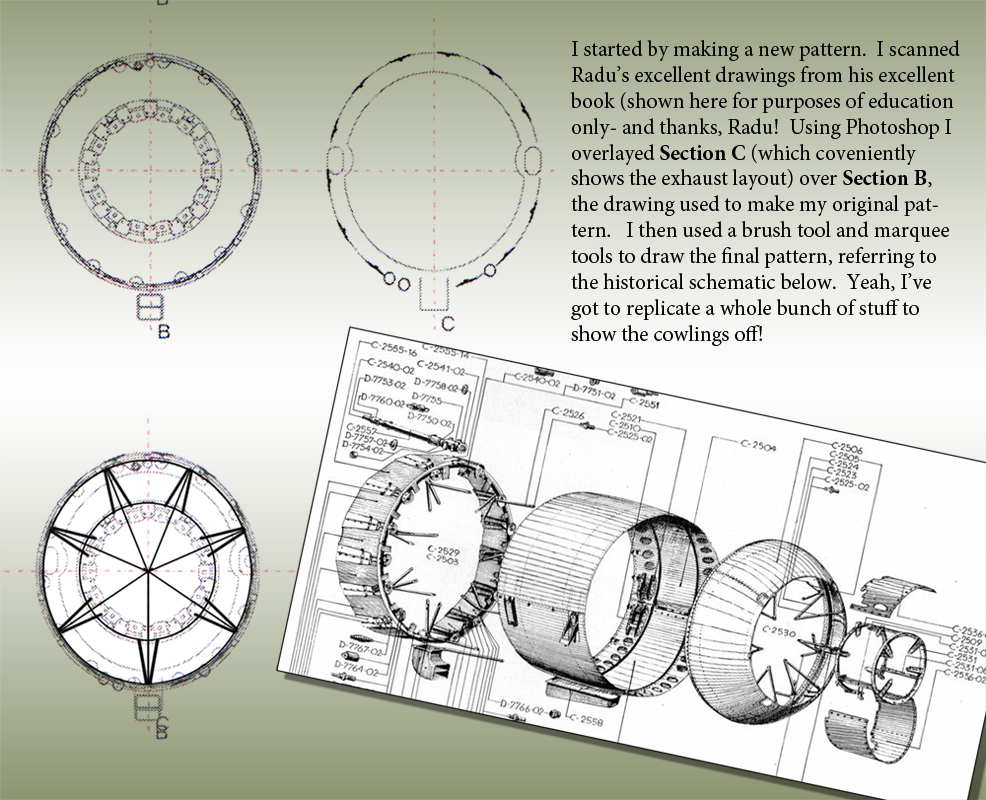Thanks, you flatterers! 
Moon, I am still chopping off tiny bits of solder- if anybody has a line on good soldering paste please let me know!
Eagle, this dang thing is tiny indeed. i thought I could get it done in a reasonable amount of time, but, well, I've chukked it all up, haven't I? :P
I did rebuild the front of the air intake but forgot to post the pics. That will be in the next update. The big dust filter will be attached to the lower cowl, and I'll make 8 latch brackets from pie-pan foil.
My last request will be for a spiral pattern for the spinner- neither set of decals has one, and the spiral is very tight on a smallish, FW109-like spinner. Nothing comes easy, do it?
Cheers-
chuk
Moon, I am still chopping off tiny bits of solder- if anybody has a line on good soldering paste please let me know!
Eagle, this dang thing is tiny indeed. i thought I could get it done in a reasonable amount of time, but, well, I've chukked it all up, haven't I? :P
I did rebuild the front of the air intake but forgot to post the pics. That will be in the next update. The big dust filter will be attached to the lower cowl, and I'll make 8 latch brackets from pie-pan foil.
My last request will be for a spiral pattern for the spinner- neither set of decals has one, and the spiral is very tight on a smallish, FW109-like spinner. Nothing comes easy, do it?
Cheers-
chuk






 )
)